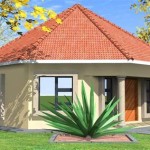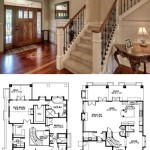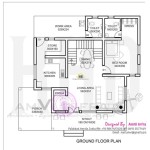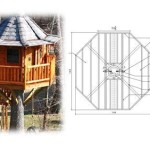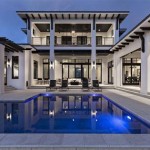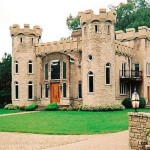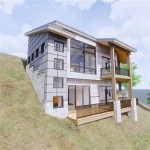White House Plans: Exploring Architectural Designs and Styles
The term "white house plans" can evoke images of the iconic Pennsylvania Avenue residence or, more broadly, refer to architectural blueprints for homes featuring white exteriors. This article will explore the latter interpretation, delving into the various styles, considerations, and advantages associated with designing and building a house with a white exterior. White exteriors, due to their timeless appeal and versatility, remain a popular choice for homeowners globally. Understanding the nuances of white house plans, from material selection to stylistic adaptation, is crucial for achieving a desired aesthetic and ensuring long-term durability.
The color white, in architectural contexts, signifies cleanliness, simplicity, and elegance. A white exterior can create a sense of spaciousness and light, making the house appear larger and more inviting. Furthermore, white provides a neutral backdrop, allowing landscaping and other exterior features to stand out. However, the apparent simplicity of a white house plan belies the complexities involved in its successful execution. Factors such as climate, architectural style, and individual preferences must be carefully considered.
Material Selection for White Exteriors
The choice of materials for a white house exterior is paramount, impacting not only the aesthetic but also the maintenance requirements and long-term durability. Various options are available, each with its advantages and disadvantages.
Wood Siding: Wood siding, such as clapboard or shingle, offers a classic and charming look. White painted wood siding is a traditional choice, particularly common in coastal and farmhouse styles. However, wood requires regular maintenance, including painting or staining to prevent rot and insect damage. The specific type of wood also influences its lifespan and maintenance needs; cedar and redwood are naturally more resistant to decay than softer woods like pine.
Brick: Brick offers durability and a timeless appeal. White-painted brick provides a textured and sophisticated look. While inherently durable, painted brick can require repainting over time. Alternatively, white-glazed brick offers a more permanent, low-maintenance solution. However, glazed brick can be more expensive and offers fewer texture variations.
Stucco: Stucco is a popular choice, particularly in warmer climates. It provides a smooth, seamless appearance and can be tinted to various shades of white. Stucco is relatively low-maintenance, but it can be susceptible to cracking, especially in areas with significant temperature fluctuations. Proper application and regular inspections are essential for maintaining its integrity.
Vinyl Siding: Vinyl siding is a cost-effective and low-maintenance option. It is available in a wide range of white shades and textures. While vinyl siding is durable, it can fade over time and may not have the same aesthetic appeal as natural materials. It's crucial to select high-quality vinyl siding with UV protection to minimize fading.
Fiber Cement Siding: Fiber cement siding offers a good balance of durability, aesthetics, and affordability. It is resistant to rot, insects, and fire, and it can be painted or pre-finished in a variety of white shades. Fiber cement siding is a popular choice for homeowners seeking a low-maintenance and long-lasting exterior.
The selection of material should always consider the local climate and environmental factors. In humid climates, materials resistant to moisture and mold growth are essential. In areas with strong sunlight, materials that are UV resistant and prevent fading are preferable.
Architectural Styles Suited for White Exteriors
White exteriors complement a diverse range of architectural styles, enhancing their inherent characteristics and creating a cohesive aesthetic. The choice of style often dictates the specific detailing and features that will define the house's overall appearance.
Farmhouse: The farmhouse style, characterized by its simple lines, gabled roofs, and expansive porches, is perfectly suited for a white exterior. White painted wood siding is a classic choice, often paired with black window frames and a contrasting front door. The white exterior enhances the farmhouse's rustic charm and creates a welcoming atmosphere.
Colonial: Colonial-style homes, with their symmetrical facades, multi-pane windows, and formal entrances, exude elegance and tradition. A white exterior emphasizes the symmetry and clean lines of the Colonial design. White painted brick or clapboard siding is commonly used, often complemented by dark shutters and a prominent front door.
Modern: Modern architecture, characterized by its clean lines, minimalist aesthetic, and emphasis on natural light, also benefits from a white exterior. White stucco or concrete can create a sleek and contemporary look. Large windows and minimalist landscaping further enhance the modern design.
Coastal: Coastal homes, designed to withstand the elements and embrace the surrounding seascape, often feature white exteriors. White painted wood siding, particularly shingle style, is a popular choice. The white exterior reflects sunlight and helps keep the house cool, while also evoking the colors of the beach and sea.
Craftsman: While often associated with natural wood tones, the Craftsman style can also be adapted to a white exterior. White painted wood siding, paired with exposed rafter tails, wide eaves, and a prominent front porch, can create a charming and inviting Craftsman home. The white exterior allows the architectural details to stand out.
The selection of architectural style should be harmonious with the surrounding environment and reflect the homeowner's personal preferences. Careful attention to detailing, such as window trim, door styles, and landscaping, is crucial for achieving a cohesive and visually appealing design.
Considerations for Maintaining a White House Exterior
While a white house exterior offers numerous aesthetic advantages, it also requires diligent maintenance to preserve its pristine appearance. Dirt, grime, and algae can accumulate over time, detracting from the house's curb appeal. Regular cleaning and preventative measures are essential for maintaining a clean and vibrant white exterior.
Regular Cleaning: Regular washing of the exterior is crucial for removing dirt, grime, and algae. The frequency of cleaning depends on the local climate and environmental factors. In areas with high levels of pollution or humidity, more frequent cleaning may be required. Pressure washing can be effective for removing stubborn stains, but it should be done with caution to avoid damaging the siding.
Preventing Algae Growth: Algae growth is a common problem on white exteriors, particularly in damp or shaded areas. Using siding and paints that contain mildewcides can help prevent algae growth. Regular cleaning with a solution of water and bleach can also effectively remove algae.
Addressing Staining: Various types of stains can mar the appearance of a white exterior, including water stains, rust stains, and organic stains. Identifying the source of the stain is crucial for selecting the appropriate cleaning method. Specialized cleaners are available for removing specific types of stains.
Protecting Against UV Damage: Exposure to sunlight can cause fading and discoloration of white paint and siding. Using high-quality paints and siding with UV protection can help minimize fading. Applying a protective coating can also provide an additional layer of protection against UV damage.
Regular Inspections: Regular inspections of the exterior can help identify potential problems before they become major issues. Look for cracks, peeling paint, and signs of water damage. Addressing these issues promptly can prevent further deterioration and extend the lifespan of the exterior.
Maintaining a white house exterior requires a commitment to regular cleaning and preventative measures. However, the effort is worthwhile, as a well-maintained white exterior enhances the house's curb appeal and preserves its pristine appearance for years to come.
In conclusion, white house plans offer a timeless and versatile option for homeowners seeking a clean, elegant, and inviting exterior. Careful consideration of material selection, architectural style, and maintenance requirements is crucial for achieving a successful and long-lasting design. By understanding the nuances of white house plans, homeowners can create a beautiful and enduring home that reflects their personal style and enhances the surrounding environment.

Inspired By The White House Plan 106 1206 6 Bedrooms

Inspired By The White House Plan 106 1206 6 Bedrooms

Architect Design Apartment Floor Plans House

House Plans How To Design Your Home Plan

White House Country Home Plan 084d 0085 Plans And More

House Plans Home And Floor From Ultimate Country Style More Tiny

White Lily House Plan Modern Farmhouse Luxury Floor Plans

Inspired By The White House Plan 106 1206 6 Bedrooms

Beautiful Modern Farmhouse Style House Plan 4383 Remington Ridge

White Lily House Plan Modern Farmhouse Luxury Floor Plans

